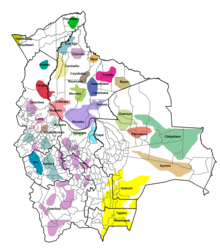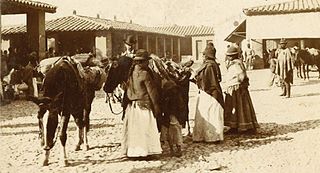
The Aymara or Aimara people are an indigenous people in the Andes and Altiplano regions of South America; about 2.3 million live in northwest Argentina, Bolivia, Chile, and Peru. Their ancestors lived in the region for many centuries before becoming a subject people of the Inca in the late 15th or early 16th century, and later of the Spanish in the 16th century. With the Spanish American Wars of Independence (1810–1825), the Aymaras became subjects of the new nations of Bolivia and Peru. After the War of the Pacific (1879–1883), Chile annexed territory with Aymara population.
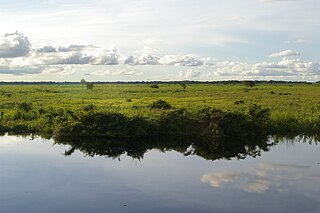
Beni, sometimes El Beni, is a northeastern department of Bolivia, in the lowlands region of the country. It is the second-largest department in the country, covering 213,564 square kilometers, and it was created by supreme decree on November 18, 1842, during the administration of General José Ballivián. Its capital is Trinidad.

Rurrenabaque is a small town in the north of Bolivia on the Beni River. It is the capital of Rurrenabaque Municipality. In recent years it has become popular with international tourism as it is an easy gateway for visits to Madidi National Park, as well as the surrounding pampas. Locals commonly refer to the town by its shortened nickname, "Rurre."

Pando is a department in Northern Bolivia, with an area of 63,827 square kilometres (24,644 sq mi), in the Amazon Rainforest, adjoining the border with Brazil and Perú. Pando has a population of 154,355. Its capital is the city of Cobija.

The Movement for Socialism–Political Instrument for the Sovereignty of the Peoples, alternately referred to as the Movement Towards Socialism or the Movement to Socialism, is a Bolivian socialist political party led by Evo Morales, founded in 1998. Its followers are known as Masistas.

José Manuel Inocencio Pando Solares was a Bolivian soldier, politician and explorer. He was also the 25th President of Bolivia from 1899 to 1904. During his government, the Acre War (1899-1903) began, in which Bolivia clashed with Brazil.
The Confederation of Indigenous Peoples of Bolivia is a national representative organization of the Bolivian indigenous movement. It was founded in October 1982 in Santa Cruz de la Sierra as the Confederation of Indigenous Peoples of the Bolivian East, with the participation of representatives of four indigenous peoples of the Bolivian East: Guarani-Izoceños, Chiquitanos, Ayoreos and Guarayos.

Madidi is a national park in the upper Amazon river basin in Bolivia. Established in 1995, it has an area of 18,958km². Along with the nearby protected areas Manuripi-Heath, Apolobamba, and the Manu Biosphere Reserve (Peru), Madidi is part of one of the largest protected areas in the world.

The following outline is provided as an overview of and topical guide to Bolivia:
Nicolás Armentia Ugarte was a Spanish Franciscan Bishop of La Paz, Bolivia, appointed 22 October 1901.

Pilón Lajas Biosphere Reserve and Communal Lands is a protected area in Bolivia located in the departments of La Paz and Beni, in their northern and western parts, respectively, about 350 km northeast of La Paz and 50 km west of San Borja. It lies largely within the Bolivian Yungas ecoregion. The main river that flows in the Pilon Lajas area is the Quiquibey River.

Isiboro Sécure National Park and Indigenous Territory is a protected area and Native Community Land in Bolivia situated between the north of the Cochabamba Department and the south of the Beni Department. It protects part of the Bolivian Yungas ecoregion. The indigenous people living within the park belong to the Tsimané, Yuracaré, and Mojeño-Trinitario peoples. The southern portion of the park has been colonized by agricultural settlers, primarily coca farmers, since the 1970s. The Bolivian government estimates that 10% of the park has been deforested by their presence.
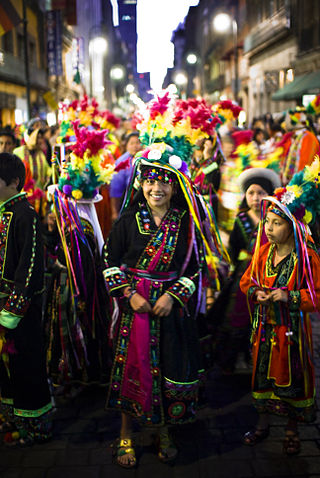
Bolivians are people identified with the country of Bolivia. This connection may be residential, legal, historical or cultural. For most Bolivians, several of these connections exist and are collectively the source of their being Bolivian.
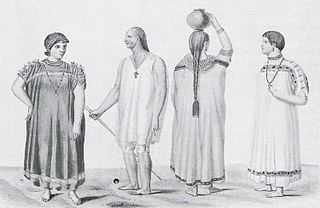
The Chiquitano or Chiquitos are an indigenous people of Bolivia, with a small number also living in Brazil. The Chiquitano primarily live in the Chiquitania tropical savanna of Santa Cruz Department, Bolivia, with a small number also living in Beni Department and in Mato Grosso, Brazil. In the 2012 census, self-identified Chiquitanos made up 1.45% of the total Bolivian population or 145,653 people, the largest number of any lowland ethnic group. A relatively small proportion of Bolivian Chiquitanos speak the Chiquitano language. Many reported to the census that they neither speak the language nor learned it as children. The Chiquitano ethnicity emerged among socially and linguistically diverse populations required to speak a common language by the Jesuit Missions of Chiquitos.
The Pact of Unity is an evolving national alliance of Bolivian grassroots organizations in support of indigenous and agrarian rights, land reform, the rewriting of the 1967 constitution through a Constituent Assembly, and a left-indigenous transformation of the Bolivian state. Since 2005, the Pact has been a close ally of Bolivian President Evo Morales, and it forms the nucleus of the National Coordination for Change, a pro-government alliance.
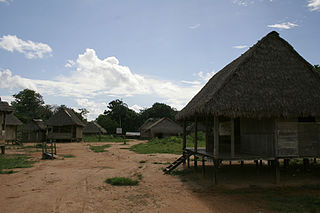
The Ese Ejja are an indigenous people of Bolivia and Peru, in the southwestern Amazon basin. 1,687 Ese Ejja live in Bolivia, in the Pando and Beni Departments, in the foothills along the Beni and the Madre de Dios Rivers. In Peru, they live along the Tambopata and Heath Rivers, near Puerto Maldonado.

Indigenous peoples in Bolivia, or Native Bolivians, are Bolivian people who are of indigenous ancestry. They constitute anywhere from 40 to 70% of Bolivia's population of 11,306,341, depending on different estimates, and belong to 36 recognized ethnic groups. Aymara and Quechua are the largest groups. The geography of Bolivia includes the Andes, the Gran Chaco, and the Amazon Rainforest.
Pacahuara people are an indigenous people of Bolivia. A small group live in Tujuré, a community located near the Chácobo people on the Alto Ivón River in the Beni Department. The group only consists of four people. The fifth, a 57-year-old woman, died on 31 December 2016 in the village of Tujure in the north-east of the country. Another uncontacted group of Pacahuara, with 50 members in eight families, lives between Rio Negro and Río Pacajuaras in the Pando of northeastern Bolivia, near the Brazilian border.
The Araona people are an ethnic group in Bolivia. Their population was 228 according to the 2012 census. Their language is the Araona language which is spoken by 711 people although many speak Spanish as well. The Araonans live in the headwaters of the Manupari river in northwest Bolivia. According to Alfred Métraux the Araona people and the Cavineño people are so intermixed with other Takanan-speaking peoples that it can be difficult to treat them separately.

The Cavineño People are an ethnic group in Bolivia. They mainly live along the Beni and Madidi rivers. There were 3,884 of them in 2012 of whom 1,173 speak the Cavineña language natively. Almost all of them speak Spanish as well. According to Alfred Métraux the Cavineño and the Araona people are so intermixed with other Takanan-speaking peoples that it can be difficult to treat them separately.
